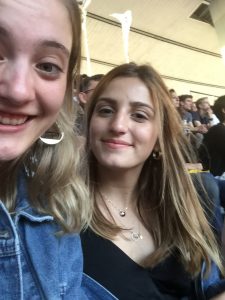
We visited the Le Cimetière du Père-Lachaise May 31, 2018. Here, we got to see the grave of Oscar Wilde, one of the most influential authors/screenplay writers of all time. His grave was enormous and covered in glass for protection. Although not intentionally, Oscar Wilde did make some contributions to neuroscience. One of his most famous pieces, and my favorite, is the Picture of Dorian Grey, about a beautiful young man who sells his soul in order for his picture, not him, to age and record his sins. Because of this story and its fame, the phenomenon characterized by a man’s extreme pride and obsession in his attractiveness and fitness of his physique, along with difficulties accepting aging the Dorian Gray Syndrome (Brosig, 2001). It is because of influences like this that Oscar Wilde finds himself buried in this Cimetière.
References
Brosig, B., Kupfer, J., Niemeier, V., & Gieler, U. (2001). The” Dorian Gray Syndrome”: psychodynamic need for hair growth restorers and other” fountains of youth.”. International journal of clinical pharmacology and therapeutics, 39(7), 279-283.




